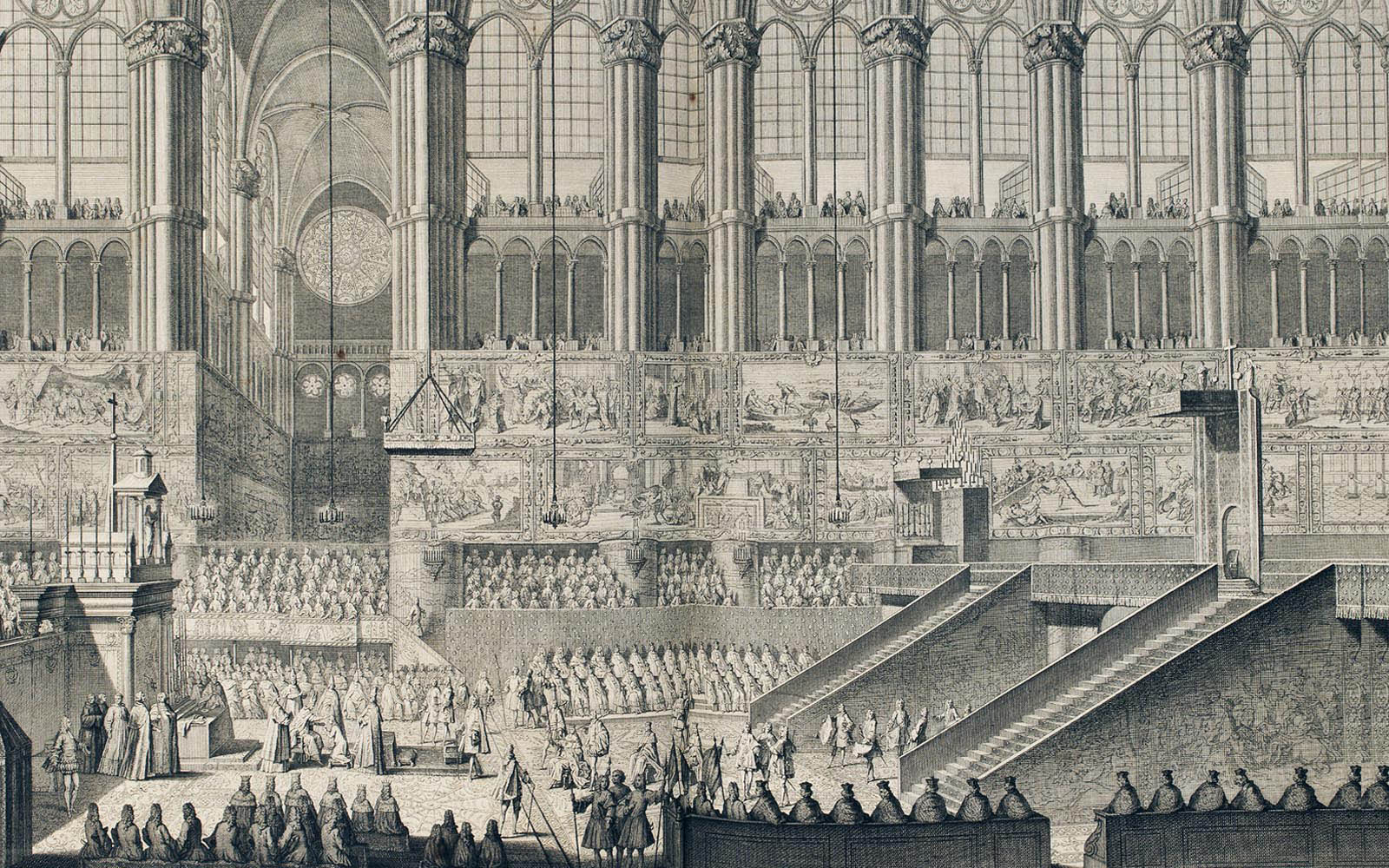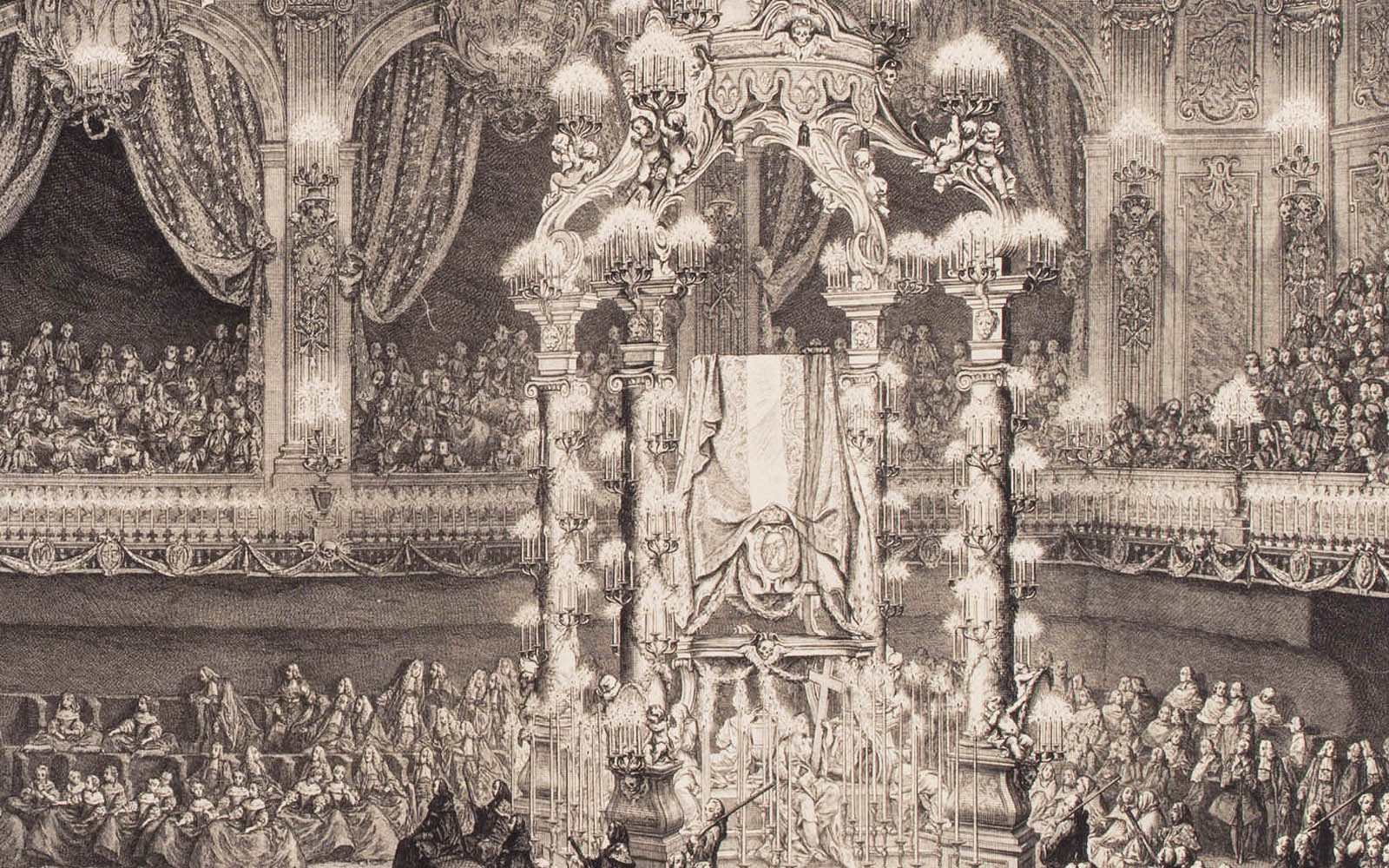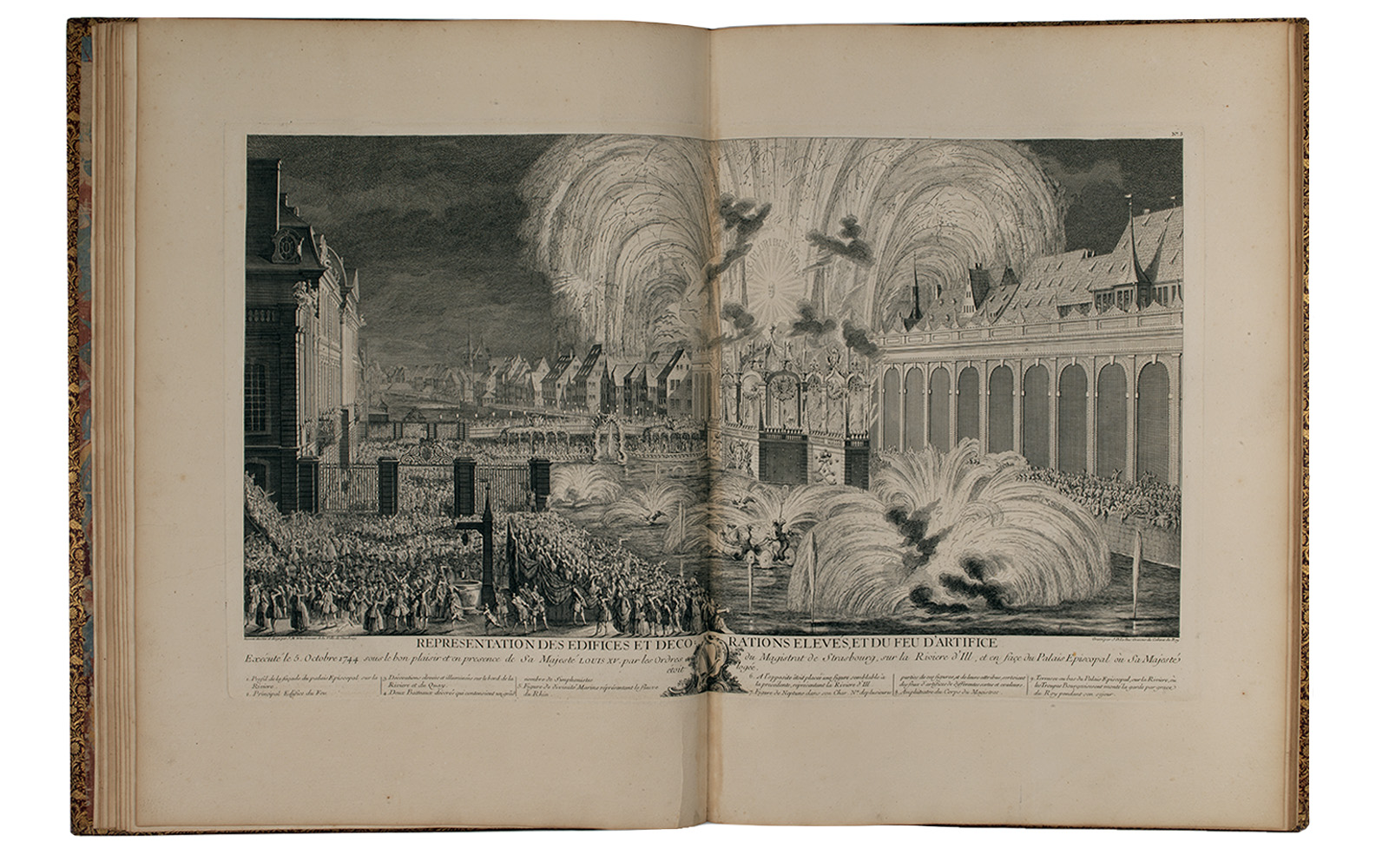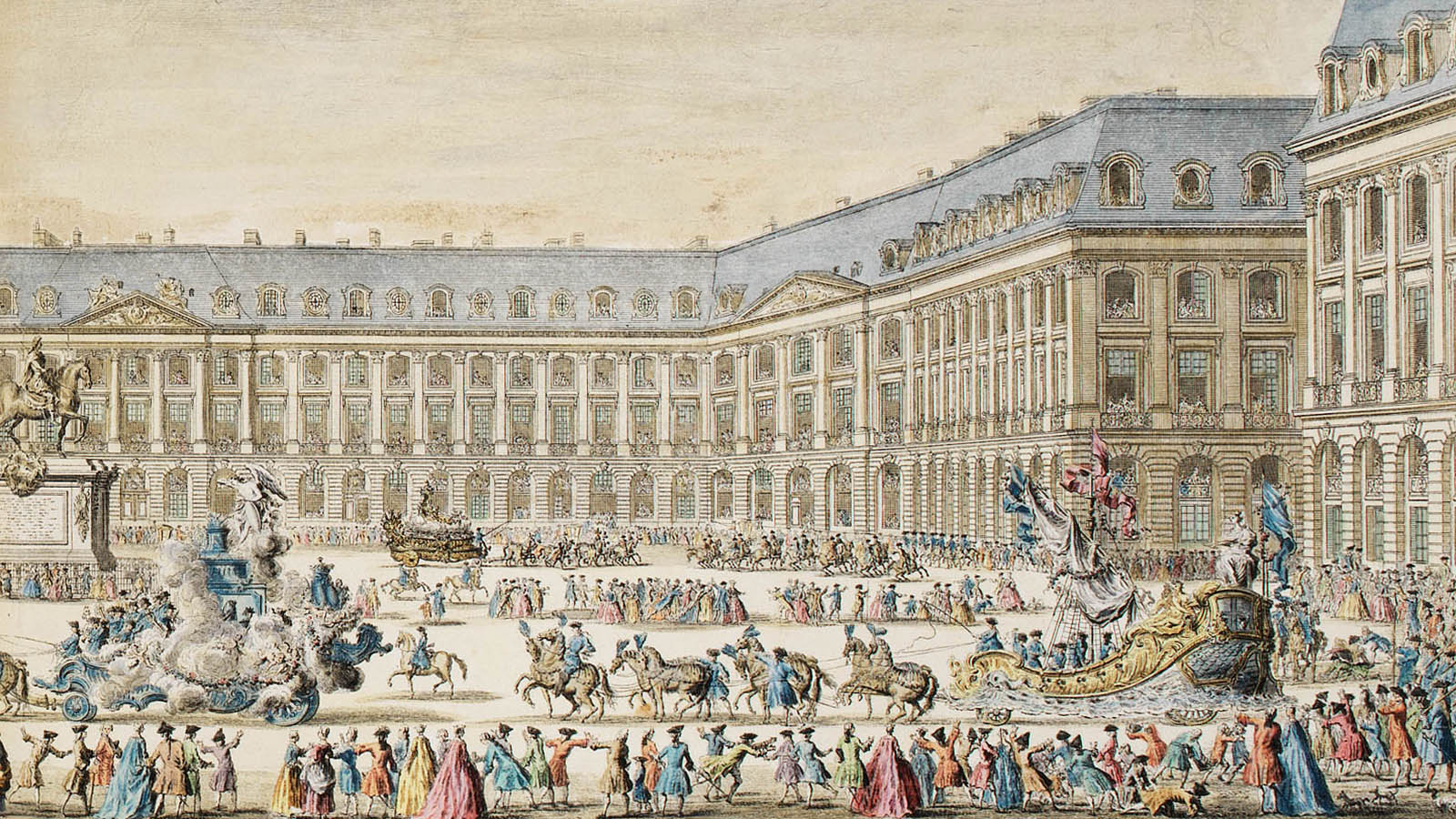Power and Ostentation: Feasts and other ceremonies in 18th-century French books
Passionate about 18th-century French art, Calouste Gulbenkian was particularly interested in books published in France during this period. Among these, a remarkable group of books of festivities, known as livres de fête, stand out as a highlight. Each of the works of art selected for display reveals, whether in their printed illustrations or in their bindings, the artistic quality that Gulbenkian always sought in his acquisitions.
Designed to record, in texts and in pictures, the ceremonies organised by kings, courts, cities or communities, the so-called books of festivities were greatly developed during the Ancien Régime, especially between the 16th and 18th centuries, until the French Revolution in 1789. By describing and illustrating in large-format notable events associated with births, coronations, weddings, journeys and funeral ceremonies of the royal family or members of the upper nobility, these books became vehicles for propaganda and for the staging of royal power, contributing to the consolidation of Absolutism in France, lasting from Louis XIV to Louis XVI.


The large-format editions on display document various instances of this assertion of power in France in the first half of the 18th century. Two of them describe the pomp and ceremony associated with the coronation and a sojourn of Louis XV in Strasbourg. An exuberant binding marks the marriage, in 1745, of the Dauphin Louis Ferdinand, the first male heir of Louis XV, to Maria Theresa of Bourbon, an Infanta of Spain. A print included in an album by Cochin, le Jeune, shows the solemnity of this princess’s funeral ceremonies in 1746. The book for the second marriage of the same Dauphin to Maria Josepha of Saxony in 1747 illustrates the luxurious carriages that made up the celebration procession.

Attributed to Padeloup le Jeune, Louis XV’s renowned bookbinder, the richly decorated binding feature the coats of arms of the monarch and of his daughter, Madame Victoire. These aspects highlight the role these books played as symbols of the power and ostentation of the absolutist French monarchy.

